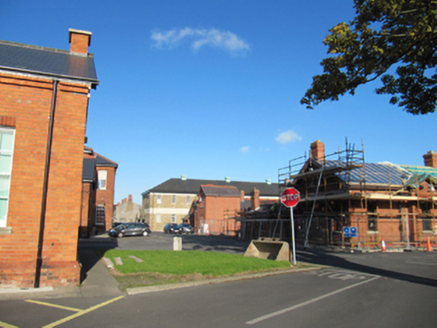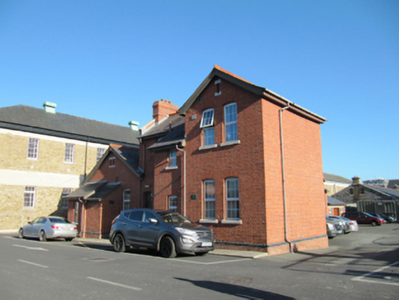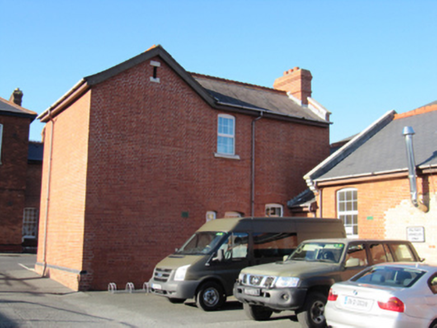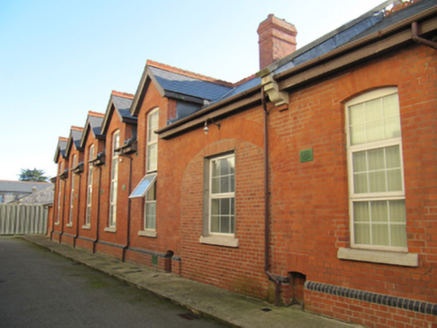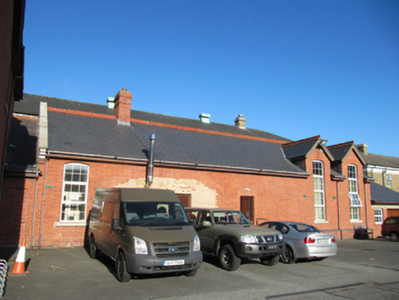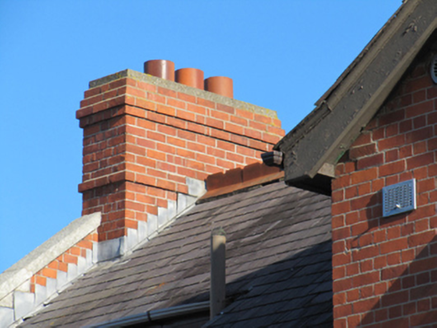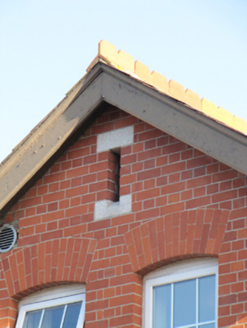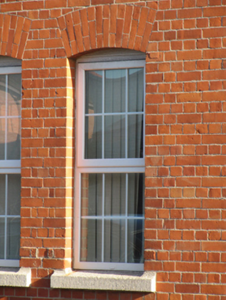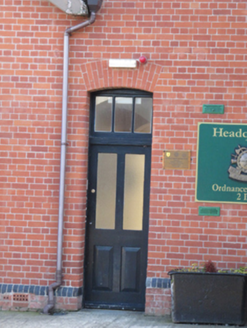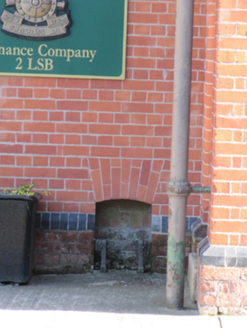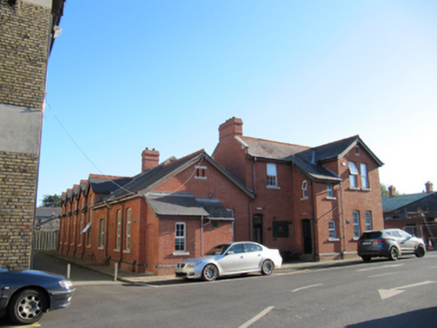Survey Data
Reg No
50081033
Rating
Regional
Categories of Special Interest
Architectural, Social
Previous Name
Portobello Barracks
Original Use
Building misc
In Use As
Building misc
Date
1880 - 1900
Coordinates
315296, 232051
Date Recorded
18/11/2013
Date Updated
--/--/--
Description
Detached four-bay two-storey ordnance group headquarters, built c.1890, having gable-fronted end-bay to south, lean-to two-storey porch to north of this to front (west) elevation, gable-fronted single-storey with dormer attic range to north, lean-to single-storey porch to front of this. Pitched slate roofs with decorative terracotta ridge cresting, red brick chimneystacks, timber bargeboards, and cast-iron rainwater goods. Raised barge having granite coping to main block. Gabled half-dormer windows to north and south elevations of north range. Red brick laid in English bond to walls, having black brick plinth course. Segmental-headed carriage-arch to north elevation, now blocked. Segmental-headed niches to plinth flanking carriage-arch, with remains of cast-iron bootscrapes. Evidence for demolished wing to south elevation. Segmental-headed window openings having granite sills and replacement uPVC windows. Square-headed unglazed openings to apices of end-bay to south. Segmental-headed door opening to front, with bull-nosed surround, half-glazed timber panelled door and tripartite overlight. Segmental-headed niche to plinth beside door, with cast-iron bootscrape. Segmental-headed door opening to north elevation of front porch, having half-glazed timber panelled door and granite steps. Square-headed door openings to south elevation of north range, with half-glazed timber panelled door and timber panelled door having louvered vents.
Appraisal
Portobello Barracks was constructed at the beginning of the nineteenth century as a cavalry barracks. It was taken over by Irish troops in 1922, and became the Headquarters of the National Army, under the leadership of Michael Collins. It was renamed Cathal Brugha Barracks in 1952, after the Chief of Staff of the Irish Republican Army during the War of Independence, and Ceann Comhairle of the first Dail in 1919. This well-composed red brick building was a later addition to the barracks, and retains much of its historic fabric and features. Its brick construction and careful brick detailing are typical of the late nineteenth century, and its architectural style and materials are shared with the other late nineteenth century buildings which were added to the barracks at the time. As the ordnance company headquarters, it serves an important practical function to the military.
